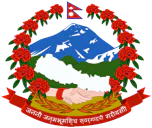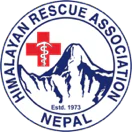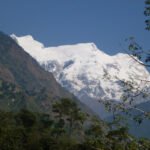

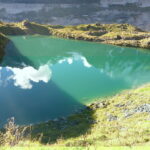
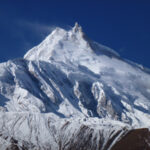
Explore the world's best trekking destination with native guides
Tsum Valley Trekking is an adventure around the remote corners of the Mid-West Himalayas around the high country of Gorkha district. The Tsum area is known as the Valley of Happiness, as described in the ancient holy text. By famous saints and Gurus of Tibet, the Tsum Valley is an extension of the vast Tibetan South West plateau.
A barren and windswept land, yet beautiful and well-hidden from the world of modern civilization. Located behind the massif bulk of the Ganesh Himal and Manaslu range of peaks, with arrays of smaller and rocky jagged mountains.
The trek and adventure to Tsum Valley leads to dramatic changes in landscapes, vegetation, climate, and cultures. Starting from lush green farmland, lower warm paddy fields then reaching cooler hills, covered in dense forest.
The first and last part of the journey follows the same main routes of Manaslu Circuit for some days. As the walk progresses the route diverts from the mountain village of Lokpa to enter Tsum, the Valley of Happiness. The trail follows exploring lovely villages of Chumling, Chokanparo, and Nile to reach the ultimate destination at Mu Gompa. Enjoy the beautiful surrounding dramatic scenery along with the local impressive cultures of the natives.
The high villagers are known as Tsumbas, the highlanders of Tsum Valley, situated close to the Tibet border. Where trade and bartering between two neighboring countries still exist from past centuries. The journey finally reaches Mu Gompa, the largest monastery of Tsum Valley. Although less than 100 years old, it’s the holiest site for Buddhist pilgrims.
Enjoy the unique country landscapes and terrain and views of snow-clad peaks in the harmony of monks on prayers. After wonderful experience, return journey to Lokpa, and then down towards warmer lower farm areas. The walk completes reaching back at Maccha-Khola for a long, exciting drive to Kathmandu. After a marvelous adventure to Tsum Valley Trekking and around its beautiful scenic and cultural location.
The best seasons for Tsum Valley Treks, are late spring and autumn. Spring starts from March to May, most days are sunny but can get cloudy in the late afternoon. Chances of light snowfall with cold mornings and nighttime at above 2,000 m. Lovely times with wildflowers in seasonal bloom, especially the rhododendrons of various colors, en route to Tsum Valley.
The next best season is autumn/fall, which begins in September and ends in November. One of the high seasons for views and pleasant walks, sunny days most of the time in autumn. But gets dark soon, due to short sunlight hours, cold morning, and late afternoon till nighttime. Could get snowfall from Nile to high Mu Gompa sometimes.
The route is straightforward with a signpost at each junction of the mid-ways, so there will be no confusion. The trails are nicely laid and good for walking all the way to Tsum Valley at Mu Gompa. Includes steep uphill for short hour, and with gradual winding path through lovely forest.
Crossing over exciting bridges and with steep downhill. Few gradual section to enjoy with touch of high altitude from Lokpa village onwards to Mu Gompa. Sometimes the walk leads to cross over landslides areas, depending upon seasons. After Mu Gompa most of the walk is downhill back to Maccha-Khola with few short steep climb.
An exciting drive from warm areas to cooler hills of Gorkha district, walking on the main trail. Following the Manaslu route for few days till Lokpa, then the route diverts further east to reach Tsum Valley. The low mid-hills populated by mixed people of both religions Hindu and Buddhist. The Gurung, Magar and some Newar with Hindu Bharamins, Chettries and Dalits, makes the walk interesting to observe both cultures.
High above Jagat and Philim villages coming across Bhotias the tribes of Manaslu & Tsum Valley with strong Buddhist heritage cultures. Similar to their Tibetan predecessors across the borders towards north of Mu Gompa and Nile villages. The native and highlanders of Tsum Valley known as the Tsumbas who have strong bonds with the Tibetans across the border of South West Tibet. After Lokpa the country changes to dramatic landscapes similar to Tibetan plateau of dry and arid windswept country.
An amazing walk from lush green vegetation and dense forest to wide open dry and scenic Tsum. The high country is known as the Valley of Happiness as named from the ancient Tibetan religious texts.
Day 01: Arrival in Kathmandu and transfer to hotel.
Day 02: Tour of Kathmandu heritage sites of great interest.
Day 03: Drive to Machha Khola 900 m / 2,952 feet approx. 07 hours.
Day 04: Trek to Jagat 1,340 m via Dovan 1,070 m-06 hours.
Day 05: Trek to Lokpa 2,240 m via Deng 1,800 m – 07 hrs.
Day 06: Trek to Chumling 2,386 m – 06 hrs.
Day 07: Trek to Chokang-Paro 3,010 m – 05 hrs.
Day 08: Trek to Nile 3,361 m visiting Milarepa cave – 06 hrs.
Day 09: Trek to Mu Gompa 3,700 m – 04 hrs.
Day 10: Trek to Rachen Gompa 3, 240 m -04 hrs.
Day 11: Trek back to Chumling – 05 hrs.
Day 12: Trek to Lokpa 2,240 m – 06 hrs.
Day 13: Trek to Jagat 1,340 m – 06 hrs.
Day 14: Trek to Machha-Khola – 05 hrs.
Day 15: Drive to Kathmandu and transfer to hotel -07 hours.
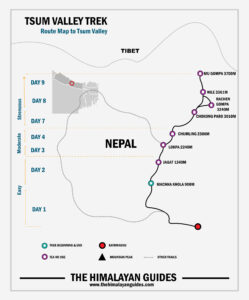
Breakfast, lunch, and dinner are prepared during the trek. The meals are basic, but will give you enough energy for your appetite. Fruit is also available after each meal.
During the trek, we stay in lodges or teahouses. These are simple in nature, but fully equipped. Do not expect too much luxury.
Yes, it is within the restricted areas, the last forbidden Himalayan country which was open for outside visitors. From 2008, the entrance point towards Restricted Area of Tsum Valley starts from Jagat Village. On the second day of trekking from Machha-Khola.
On walks the views of snow peak are obstructed by the high green hills. As you walk around the Buddi Gandaki River gorge, reaching the higher areas from Dyang onwards. Facing views of the Manaslu Himalayan range with Himal Chuli, Boudha Himal, and close look of the massif Ganesh Himal.
Includes Sringi Himal with an array of peaks, as well some peaks across the border in Tibet from Mu Gompa.
Depending upon the group size, and trip cost as per the itinerary, for less people of minimum 2-3 person. Probably using the local bus or on a sharing private vehicles with other passengers. But one can request for a better model of transportation to reserve. From land cruiser or similar and comfortable spacious coach and bus for on larger group above 8 people. Similar types of vehicles on return journey after the trek, as per the trip cost and number of person in a group.
All villages on treks, have electricity either runs by Hydro or Solar Powers. Trekkers can use the facilities for charging electronic items, as well enjoy Internet, Wi-Fi, and phone communication. But some small places like Dyang, Lokpa or Chokang-Paro as well in Mu Gompa. The internet and WI-FI connection are slow and disturbing, due to weather and altitude wise. As well depending on the landscapes like deep gorge and valleys. Trekkers have to wait until where the communication works better either Jagat, and Maccha-Khola village.
From Jagat village onwards, the accommodation of tourist standard. But at Mu Gompa the lodges are basic and simple, with common bath and toilets. All lodge restaurants offer continental, Chinese, Indian, Nepali or Tibetan foods served in a nice warm dining room.
A moderate walk with some steep ups to reach high Tsum Valley. On reaching Chumling the walk is pleasant on gradual trail to Nile, as well heading towards Mu Gompa. The rise in altitude makes the walks slower, all trails are straightforward. Taking slow and steady with possible short rest will overcome the difficult section of steep climb.
Tsum Valley was opened only from 2008, it is a fresh, raw and new areas.
Most wide-world visitors are unaware of this new hidden Shangri-La to Tsum Valley. But over the years its drawing more interested trekkers to enjoy the serene wilderness. As well walking on off the beaten tracks away from main busy trekking routes.
A lovely country walk through beautiful forest lined with tall rhododendrons, pines and fir trees. Daily views of snow peaks with local fascinating cultures of the Tsum Valley, native are known as Tsumbas. The main tribes of Tibetan origin, with lovely interesting villages lined with Buddhist prayer walls and monuments. Visiting the impressive monasteries and scenic viewpoints. Trekkers can experience great changes of landscapes, cultures, climate to vegetation. From lower sub-tropical to cooler alpine hills and reaching a windswept country similar to Tibetan dry plateau.

